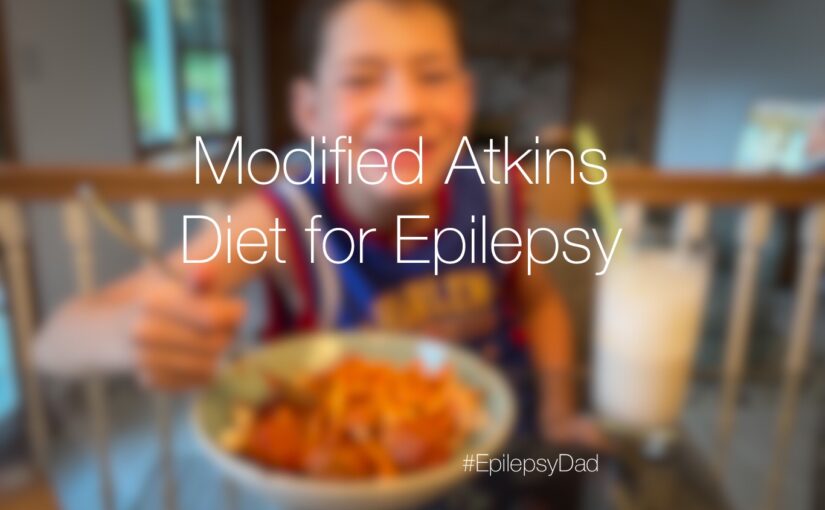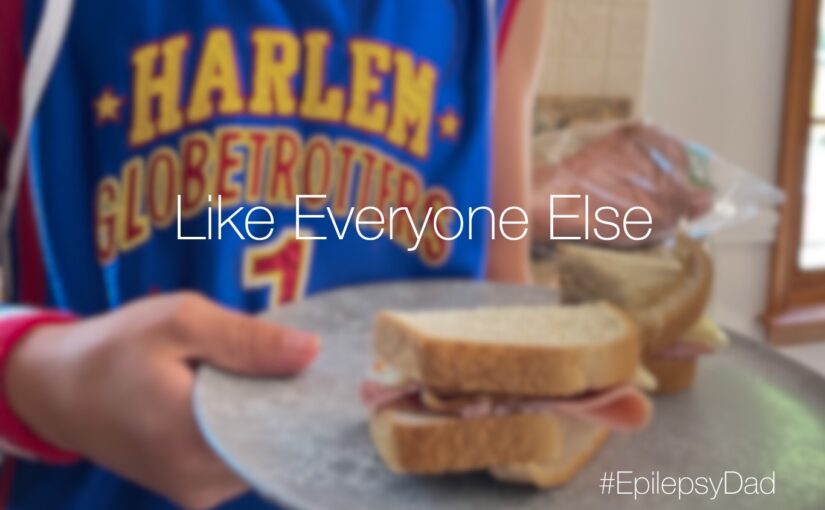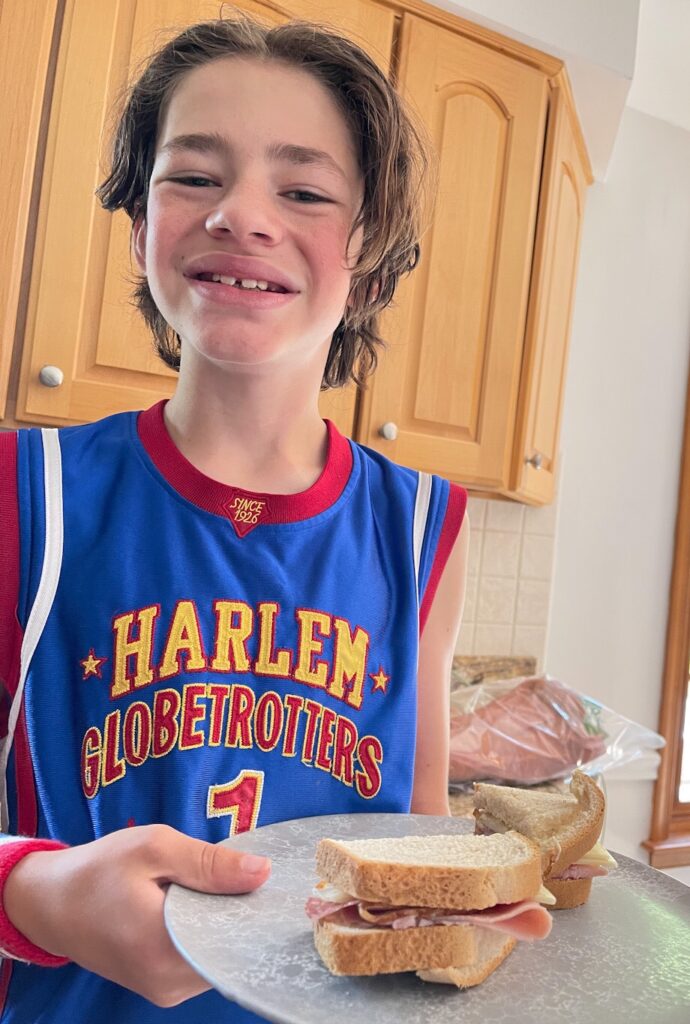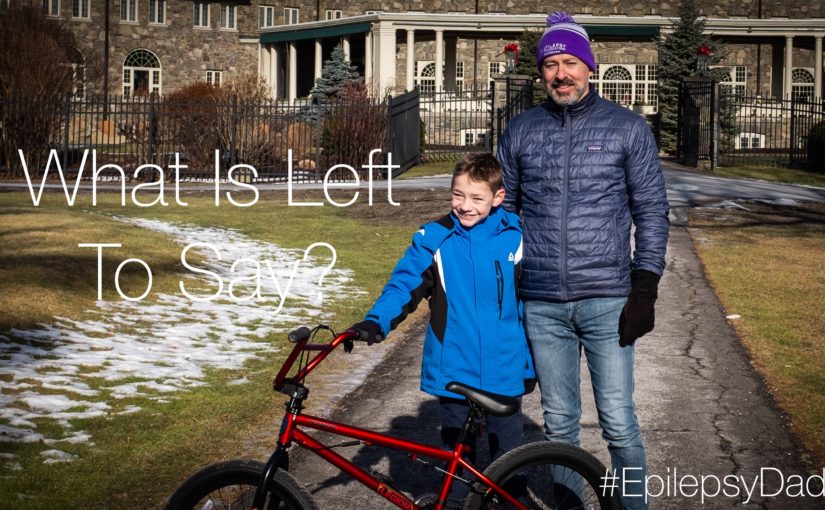Last summer, I wrote about how my son was switching to the Modified Atkins diet after nearly seven years on the Ketogenic Diet. Since it has been a year on the new diet, I wanted to share an update on how it is going, as well as a few tips and foods we’ve depended on with the new diet.
The Ketogenic Diet is a special high-fat, low-carb diet that can help control seizures for some people with epilepsy. We started on the diet soon after my son began having seizures, and after it became clear that we would need more than medications to prevent his seizures.
Keto was initially a struggle, both in terms of finding foods and ways to introduce fat into my son’s diet and the effort and logistics involved with measuring every ingredient and preparing meals separately from the meals my wife and I ate. We would bring his food with us to restaurants and, when we traveled, extended trips required a place to stay that had a kitchen. But we made it work because the diet, along with medication and a VNS, helped manage my son’s seizures. We have never been seizure-free, but we found the right balance between medication and quality of life, even if my son mostly ate the same handful of meals.
The Atkins diet is a low-carb diet from the 1970s. Similar to the idea behind keto, the idea is to limit the number of carbs. The Modified Atkins diet blends the low-carb approach with adding more fat. For my son, it opened up a new world of food, especially since the popularity of Atkins and other low-carb diets have introduced a number of products on the market that are easily available on the shelves of most grocery stores.
My son now gets a set number of net carbs a day and a minimum amount of fat that he should have, although we’re always trying to add more fat into each meal. He can have as much protein as he wants, which he demonstrates by piling up the hamburgers and hot dogs onto his plate (he’s less excited when chicken and fish are on the menu). Net carbs are calculated as total carbs minus fiber, so fiberous vegetables in a salad are a mainstay, as well, and my son hasn’t seen this amount or variety of vegetables since before keto.
When we transitioned from keto to Modified Atkins, we monitored my son closely to see if there were any changes to his seizures as well as any changes to his cognition…there are some reports of keto helping improve cognition. In both cases, we haven’t seen any meaningful changes so far. His seizure frequency and duration are the same, and we haven’t noticed any worsening in his cognition.
The most significant change that we’ve seen is his quality of life. My son was so excited to have a sandwich for lunch, just like the other kids in school, rather than the fat-heavy ice cream we usually sent him with. He can also have a small bowl of low-carb cereal for breakfast, just like his friends. And now we eat the same meals at dinner, just in different proportions.
I was wrestling over the past few years with the Ketogenic Diet as I saw my son notice how his food differed from his friends. I started questioning the value of the diet and pushing to get him off it while the doctors were convinced that it was helping him. The Modified Atkins diet feels like a step in the right direction. Even though it is still a medical diet, there are enough options that it doesn’t feel as much like a restrictive diet as keto did.
Overall, the change has been a positive experience for my son and our family. While it may not be an option for everyone, it is worth having a conversation with your doctor if you’re looking for alternatives to the ketogenic diet to help manage seizures.
—
If you’re on or thinking about the Modified Atkins diet, first check with your doctor. But I wanted to pass along a few items that are staples for us that have made the diet more manageable and delicious.
Catalina Crunch Cereal – There are a few low-car cereals (5g net carbs per 1/2 cup) on the market, but we’ve found Catalina Crunch to be easily available and tasty. You can find them in the cereal aisle at Whole Foods, or try a sample pack of flavors through Amazon or direct from the manufacturer.
Schmidt Oldtype 6/47 Bread – At 6g net carbs per slice, this is the bread that allows my son to have a sandwich at lunch. The taste and structure are close to that of other breads and it holds up well. The bread comes in a few varieties, as well. There are other 6/47 options like buns and bagels, but those have more net carbs. The bread is available at our local Acme grocery store.
Outer Aisle Sandwich Thins – Found in the frozen section of Whole Foods, we toast these in the oven and use these as hamburger buns. Two slices is only 2g of net carbs.
Outer Aisle Pizza Crust – Also from Outer Aisle and available in the frozen section at Whole foods is their pizza crust. When we were on keto, we made crust out of soy flour, mayonaise and egg. These are bigger (and already made) and only have 3g net carbs per crust.
Mission Carb Balance Tortilla – These are available in most grocery stores and offer a low-carb option for burritos, quesadillas, and wraps. At only 4g net carbs per tortilla, my son can have two good-sized quesadillas for dinner with cheese and meat or beans snuck inside. Pro-tip: If you slather on some mayo and then add the cheese, it’s a good way to add more fat to the meal, too.
Atkins Bars – Atkins bars are great to have for a snack. There a meal replacements, snacks, and treats, each with differing amounts of net carbs. But we usually add one of these to my son’s lunch box for school (Snickerdoodle is his favorite). In most stores, Atkins products are near the pharmacy and health section, not in the granola or Kind bar aisle.
Impastable Noodles – These are the best low carb pasta we’ve found so far. They come in different types, allowing us to mix up different recipes including traditional spaghetti or mac and cheese. I usually cook it a little longer than recommended to get a better texture, but we all eat these now on Spaghetti Sunday.



